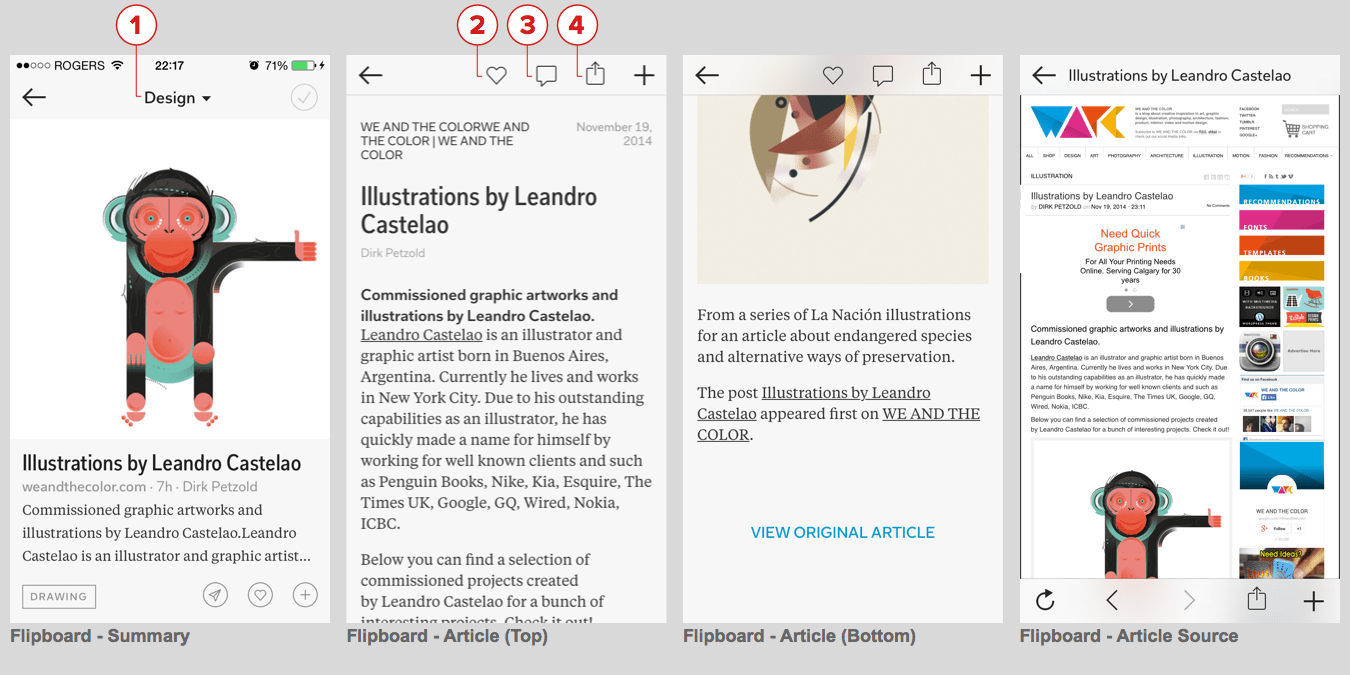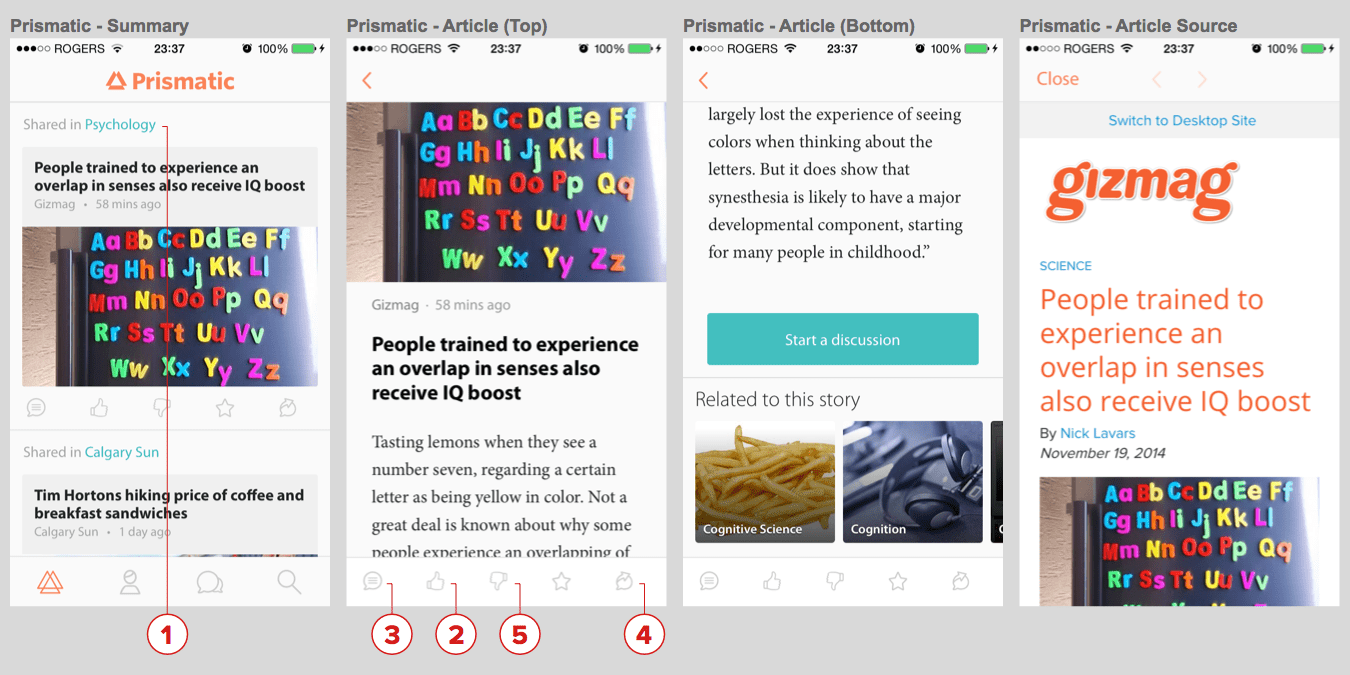A curated, personalized web is a more meaningful web
A curated information environment is a place – like a website or an app – where relevant content is pushed to you based on your tastes and interests.
People don't just come to your website for your content any more. Sometimes your content goes to them. Website content travels to many different places beyond the walls of your website: to apps on mobile devices, Facebook, Twitter, Tumblr, Pinterest boards, and to curated, personalized information environments like Prismatic and Flipboard. Your content is on the move and these destinations are swallowing it up. Is your customer portal ready? Personalized, curated information environments are shifting how people consume information on the web. So, what can be done to prepare content that fits these kinds of spaces?
Prismatic and Flipboard


Flipboard (pictured first) is one of many apps that let people curate and personalize the content they consume on the web. Prismatic is another tool that provides a similar experience.
The attributes these two apps that qualify them as curated information environments are:
- People select the topics they're interested in.
- Curated content from around the web is aggregated, distilled, and elevated based on your interests.
- New content is regularly curated and recommended to you using machine learning techniques. (Prismatic does this especially well.)
- You can acknowledge your approval of content through applause (Flipboard: "heart" and Prismatic: "star").
- You can generate or continue conversation about the content with comments.
- You can amplify the reach of content through sharing.
- Other people's engagement with content contributes to its relevance (semi-democratic curation).
- These information environments use the internet-at-large as their content databases.
- Portable, machine-readable content makes these information environments possible.
The resulting space delivers two excellent outcomes for people seeking information: reduced clutter and better findability.
Reduced clutter
Curated information environments reduce noise and clutter. The shear volume of information out there makes it hard to find something useful and meaningful. Big search engines like Google can help us meet specific information needs, but they also take the "browse" out of a web experience.
Better findability
Browsing curated, personalized information environments improves the likelihood of finding what you're looking for. You no longer need to explore the entire web. Instead, you explore select topical content you're interested in. It’s like a personalized library with just the sections you care about.
Additionally, these information environments can present content from all over the web in a regular and predictable way. This eases consumption by making irregular content feel familiar and predictable.
The trade-off
Curated information environments are biased towards further developing your current interests and less towards helping you discover new interests, but the trade-off seems to be worth it.
So what?
So what does all of this mean to you, someone who owns, makes, or manages a website? Here are some of the things we consider when creating customer portals and websites and what it all means to us at Habanero.
It demonstrates the increasing demand to ensure the content on your website is flexible, adaptive, and nimble.
It means you've considered all of the places your content will go and how you want it to show up when it gets there.
It means that you should be pushing for the use of semantic markup on your customer portal or website.
Apply the fundamentals of content strategy and information architecture by structuring your content into component "chunks" like title, summary, and article. Create information hierarchy on a page using heading tags, sections, and callouts that semantically label your content.
It means you should prime your content for broad distribution to, and consumption in, curated information environments.
Machine-readable metadata exposes your content and provides presentation instructions to the OpenGraph (used by Facebook), to Twitter via Twitter Cards, and to other services (like Google) that try to understand content that adheres to Schema.org standards.
It means you ensure a safe journey for your content from where it lives on your website to where people are consuming it.
Is your content ready to be consumed in curated information environments? I'd love to hear about the steps you're taking to make your content flexible and prepare it for this journey.





